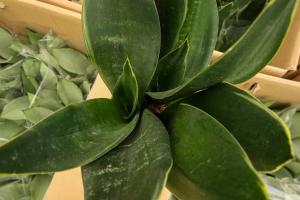How to Help Sick Tomato Plants
Tomato plants are a staple in many gardens, but unfortunately, they can fall sick and suffer from diseases if not properly taken care of. If your tomato plants are looking unhealthy and not producing well, don't give up hope just yet. Here are some steps you can take to help revive and strengthen sick tomato plants.
Identifying the Problem
The first step in helping sick tomato plants is to identify what exactly is wrong with them. Some common problems that tomato plants face include nutrient deficiencies, overwatering, underwatering, pests, fungal infections, and viral diseases.
If your plant looks wilted, it may be underwatered or suffering from a fungal infection. Yellowing leaves may indicate a nutrient deficiency or pest problem, while brown spots or lesions could be a sign of a viral disease.
Once you've identified the problem, you can take specific steps to treat it and prevent future issues.
Addressing Nutrient Deficiencies
If your tomato plant is lacking certain nutrients, it may not grow properly and can become susceptible to diseases. Common nutrient deficiencies in tomato plants include nitrogen, phosphorus, and potassium.
To address these deficiencies, you can use organic fertilizers that are high in the lacking nutrient. For example, bone meal is a good source of phosphorus, while compost or manure can provide nitrogen.
Be sure not to over-fertilize your plants, as this can lead to burn and other issues. Follow the instructions on your fertilizer package and apply at the recommended intervals.
Treating Pests
Pests like aphids, whiteflies, and spider mites can inflict significant damage on tomato plants. To treat pests, you can use natural insecticides like neem oil, garlic spray, or insecticidal soap.
If your plants are heavily infested, you may need to remove some of the affected leaves or use more aggressive treatments, such as pyrethrum or rotenone-based insecticides. Be sure to follow the product instructions and use protective gear, such as gloves and goggles.
Preventing and Addressing Fungal Infections
Fungal infections like powdery mildew, blight, and leaf spot can weaken tomato plants and stunt their growth. To prevent fungal infections, avoid watering your plants from above and instead water them at the base. Make sure your plants have good air circulation and are not overcrowded.
To treat fungal infections, you can use organic fungicides such as copper sulfate or sulfur powder. Remove affected leaves and dispose of them in the trash, not the compost pile.
Conclusion
Tomato plants can succumb to many problems, but with proper care and attention, you can help them thrive. By identifying the problem, addressing nutrient deficiencies, treating pests, and preventing and addressing fungal infections, you can help your tomato plants grow strong and healthy and produce a bountiful harvest.

 how many times do yo...
how many times do yo... how many planted tre...
how many planted tre... how many pine trees ...
how many pine trees ... how many pecan trees...
how many pecan trees... how many plants comp...
how many plants comp... how many plants can ...
how many plants can ... how many plants and ...
how many plants and ... how many pepper plan...
how many pepper plan...





























